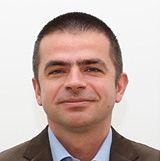Programme
-
Registration
Moderator: Sidsel Dyekjær, Science and Policy Consultant, CHEM Trust, Denmark
- SESSION 1: OVERVIEWS OF CURRENT AND FUTURE TRENDS
-
Overview of new developments in global food contact material regulation
-
Ongoing REFIT evaluation of the FCM Regulation as an opportunity to fix a broken system and deliver better consumer protection
- Chemicals of concern in food and products matter to consumers
- The current FCM regime in Europe fails to address these concerns
- The REFIT is an opportunity to change that
- The plastics FCM regulation establishes an automatic ban on chemicals classified as CMR under the CLP regulation
- A similar approach can and should be taken for other FCM types.
 Pelle Moos
Senior Safety and Health Policy Officer, Team Leader, BEUC (The European Consumer Organisation), Belgium
Pelle Moos
Senior Safety and Health Policy Officer, Team Leader, BEUC (The European Consumer Organisation), Belgium -
The gap between reality and requirements for FCMs
- The risk is unknown for many substances that get into our food from FCM.
- Legislation requires these substances do not endanger human health
- How can this gap be bridged in the future?
-
Panel discussion including Q&A:
How can we close the gaps between FCM regulation and reality to ensure safety of consumers?
- What are the solutions to get rid of the gaps more efficiently
- How realistic are risk assessments for FCM
- How could industry contribute to transparency in the supply chain
Panelists:
All session 1 speakers & Jane Muncke, Managing Director Food Packaging Forum, Switzerland
-
Refreshments
- SESSION 2: CURRENT AND FUTURE TRENDS IN FCMS - PLASTICS
-
Compliance with FCM regulations: challenges and opportunities for the plastics industry
-
Risk assessment for NIAS (non-intentionally added substances)
-
Industry case study - (how do you make sure that the recycled materials are safe?)
Speaker tbc
-
Q&A
-
Lunch
- SESSION 3: CURRENT AND FUTURE TRENDS IN FCMS - NON-HARMONISED MATERIALS (PRINTING/PACKAGING)
-
Retailer perspective: Case studies of phasing out substances of concern and how they are used in marketing
-
Enforcement of compliance for non-harmonised materials in Denmark, focus: fluorinated compounds in paper and board, documentary checks
-
Safety and risk assessment of substances in printing inks - Examples of information passed through the supply chain
 Matthias Henker
Director of Technology FP EMEA / Chair of EuPIA PIFOOD, Flint Group Packaging Inks Germany GmbH / EuPIA
Matthias Henker
Director of Technology FP EMEA / Chair of EuPIA PIFOOD, Flint Group Packaging Inks Germany GmbH / EuPIA -
Q&A
-
Refreshments
- SESSION 4: FOOD CONTACT MATERIALS IN THE CIRCULAR ECONOMY
-
Food packaging in the circular economy: a focus on chemical safety of FCMs
- Refuse, reduce, reuse, recycle, recover, rot: How does the circular economy affect food packaging?
- Hazardous chemicals in recycled materials: What are examples of chemicals of concern found in recycled FCMs?
- Tackling the circularity challenge: How is science, advocacy and industry addressing the issue?
-
Study on quantification and modelling of selected chemicals in the European paper loop
-
Q&A
-
Panel discussion on circular economy and food contact materials
How do we ensure safety of consumers?
- In the areas that are not harmonised?
- How are EFSA evaluations being applied in the harmonised areas?
- Is there enough feedstock?
- Who is checking the parameters? Will people use it?
-
Close of conference






.jpg)

